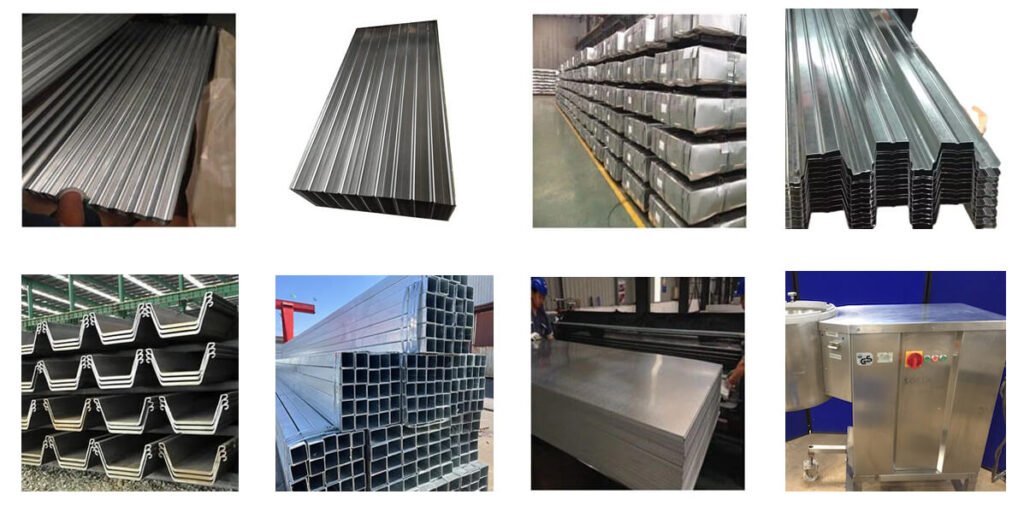SPCC is a cold-rolled carbon steel grade under the Japanese Industrial Standard JIS G3141, widely used in applications that require smooth surface finish, precise thickness tolerance, and good formability. Produced through a cold reduction process, SPCC steel offers excellent dimensional accuracy and surface quality, making it suitable for parts that demand fine appearance and tight fabrication tolerances. It provides moderate strength and can be easily bent, stamped, or shaped for manufacturing components such as automotive panels, electrical enclosures, appliance bodies, furniture frames, and precision parts. Its clean surface allows for superior painting, coating, and plating adhesion, ensuring long-lasting performance. SPCC is a preferred choice in automotive, electronics, and household appliance manufacturing due to its balance of workability, surface quality, and cost-effectiveness.
SPCC Steel Grades
High-Quality Cold-Rolled Steel for Precision Forming and Industrial Applications
- Technical Support
SPCC Steel Technical Specifications & Applications
Table of Contents
1. Typical Uses & Selection Guidance
- SGCC Overview SGCC (Hot-Dip Galvanized Cold-Rolled Steel) is a zinc-coated steel grade under JIS G3302, offering excellent corrosion resistance, moderate strength, and good formability. It is widely used in construction, automotive, appliances, and general manufacturing due to its durability and surface quality.
- Corrosion Protection SGCC features a uniform hot-dip galvanized zinc coating that provides long-lasting protection against rust and oxidation in harsh outdoor or industrial environments. The smooth surface supports painting, powder coating, and other finishing processes for enhanced durability.
- Forming Advantages SGCC offers reliable elongation, bendability, and formability, making it suitable for stamping, cutting, and shaping into roofing sheets, wall panels, structural components, and automotive parts. Manufactured to strict quality standards, SGCC ensures consistent performance and dependable mechanical properties.
2. Technical Specifications Table
1. Chemical Composition Requirements (Maximum %)
| Steel Grade | Carbon (C) | Manganese (Mn) | Phosphorus (P) | Sulfur (S) |
|---|---|---|---|---|
| SPCC | ≤ 0.15% | ≤ 0.60% | ≤ 0.050% | ≤ 0.050% |
2. Mechanical Property Requirements (Maximum Values)
| Steel Grade | Min. Yield Strength (MPa) | Min. Tensile Strength (MPa) | Min. Elongation (%) Lo=80 mm | Bend Angle (°) | Mandrel Diameter (× Thickness t) |
|---|---|---|---|---|---|
| SPCC | 140–280 | ≥270 | ≥34% | 180° | — |
3. Mechanical Property Requirements (Maximum Values)
| Coating Class | Mandrel Diameter (× Thickness t) |
|---|---|
| Z100, Z200 | 1t |
| Z275, Z350, Z450, AZ150, AZ200, AM100, AM125, AM150, AM175, AM200, AM225 | 2t |
| Z600 | 3t |
4. Applicable Hot-Dip Metallic Coating Types
| Coating Class | Composition (%) | Key Features |
|---|---|---|
| Z (Zinc) | ≥99% Zinc | Basic corrosion protection; suitable for general use. |
| ZA (Zinc-Aluminium) | 95% Zn, 5% Al | Improved corrosion resistance over pure zinc. |
| ZF (Zinc-Iron) | Zinc with iron alloy | Enhanced hardness and wear resistance. |
| ZM (Zinc-Magnesium) | Zn with 2–4% Mg, 5–13% Al | Superior corrosion resistance in harsh environments. |
| AZ (Aluminium-Zinc) | 55% Al, 43.5% Zn, 1.5% Si | Excellent corrosion resistance and heat reflectivity. |
| AM (Aluminium-Magnesium) | Al with Mg alloy | High corrosion resistance; suitable for high-temperature applications. |
3. SPCC vs Q195 Steel — What’s the Difference?
| Property | SPCC Steel Grade | Q195 Steel Grade |
|---|---|---|
| Yield Strength | 100–180 MPa | ≈195 MPa |
| Tensile Strength | 200–280 MPa | 315–430 MPa |
| Elongation (80 mm) | ≥35% | ≈33% |
| Bendability | 180° with 6t mandrel | 180°, standard thickness |
SPCC Steel FAQ:
SPCC (Steel Plate Cold Commercial) is a cold-rolled carbon steel grade under JIS G3141. It features low carbon content (0.05%–0.15%), excellent formability, and good weldability, making it ideal for manufacturing and industrial applications.
SPCC steel is widely used for automotive body panels, appliance components, roofing sheets, and light structural elements. Its smooth surface and reliable formability make it suitable for products requiring precise shaping.
Compared to Q195, SPCC offers superior surface finish and formability, ideal for deep drawing and complex shapes. Q195 provides higher tensile strength and is better suited for heavy structural applications.
SPCC steel is made through a cold-rolling process from hot-rolled coils. Cold rolling improves surface finish, dimensional accuracy, and mechanical properties, ensuring uniform quality for industrial and manufacturing use.
SPCC steel can be protected by coatings such as paint, electroplating, or oxidation treatment. Proper storage in dry environments and the use of rust inhibitors further enhance corrosion resistance for long-term durability.







